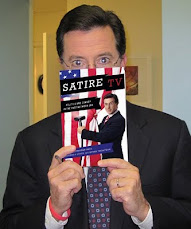Right Here on Our Stage Tonight! Ed Sullivan's America. By Gerald Nachman. (Berkeley: University of California Press, 2009. 455 pp. Cloth, $29.95, ISBN 978-0-520-25867-9. Paper, $18.95, ISBN 978-0-520-26801-2.)
Ethan Thompson
Gerald Nachman has pored over much that has been written about Ed Sullivan, watched a lot of archived television, and conducted many interviews with people who fell within Sullivan's orbit. He has fit much of that material into this book, a detailed portrait of Sullivan, with insights into the man and his program that ought to interest scholars of American popular culture and media history.
Nachman credits his interviews as being “the sources that most candidly revealed Ed Sullivan and his show to me” (p. 413). This interest in “revealing” explains the barrage of quotations that too often amount to little more than personal impressions of Sullivan, his producers, and performers on his show. Nachman pays scant attention to contemporary cultural criticism and television scholarship, and this affects his historical account and ability to explain the impact of the show. For example, he describes TV westerns as a “fad” rather than a defining programming trend and offers contradictory ways to understand early television, first dismissing Milton Berle's initial success by telling us anything could have been popular in TV’s earliest years, then later suggesting his success was because his style of comedy was well suited to the tastes of early, urban audiences. When he could have gone to an African American studies scholar to explain the significance of Sullivan's showcasing of black entertainers, he instead cites a secretary's complaint that James Brown was rude to her.
Nachman loves puns and hyperbole, and he is a little too zealous to include comments that are meant to be amusing but too often come off as irrelevant or offensive. More distressing is a sloppy attitude toward sources and getting facts straight. Nachman ignores contemporary media theory, but when he cites Marshall McLuhan's infamous “hot/cool” media dichotomy, he gets it wrong, nonsensically saying “TV was a ‘hot medium’ where a cold fish could flourish.” Most embarrassing, he notes that Carol Burnett's introductions for a “best of” clip show had to be shot in Los Angeles because she did not want to fly in the aftermath of the September 11, 2001, attacks. This might be interesting trivia had Nachman not told us in the previous sentence that the program was hosted in 1991.
What Nachman chooses to focus on is at times puzzling. Discussing the show's decline leading up to its cancellation in 1971, just one sentence notes the reduction in episodes produced each season, from 52 to 39 to 24, with no identifying years or insight into who mandated them. He then dedicates at least three pages to the Sullivan compilations that have been made over the years. Also certain to frustrate historians, Nachman likes to drop provocative tidbits then change the subject. Recounting the competition between the networks in the mid-1950s, Nachman notes that NBC’s Pat Weaver tried to steal Sullivan away from CBS. No attribution, no further discussion.
Still, the book does have strong points. Nachman recounts Sullivan's initial struggles courting a sponsor, culminating in a close relationship with Ford Motor Company, which saw the program's audience as a way to build prestige for its Lincoln-Mercury lines. The best section of the book may be the chapter devoted to the Beatles, which, rather than serving the Fab Four up as Sullivan's greatest triumph, describes the group's appearances as part of a carefully orchestrated marketing campaign.
Nachman also does a good job recounting Elvis Presley's appearances on the show, again correcting the notion that Sullivan was his first national TV appearance, but still emphasizing that the Sullivan show was the most significant “crossover” performance for Elvis and thus a foundational moment for rock ’n’ roll.








